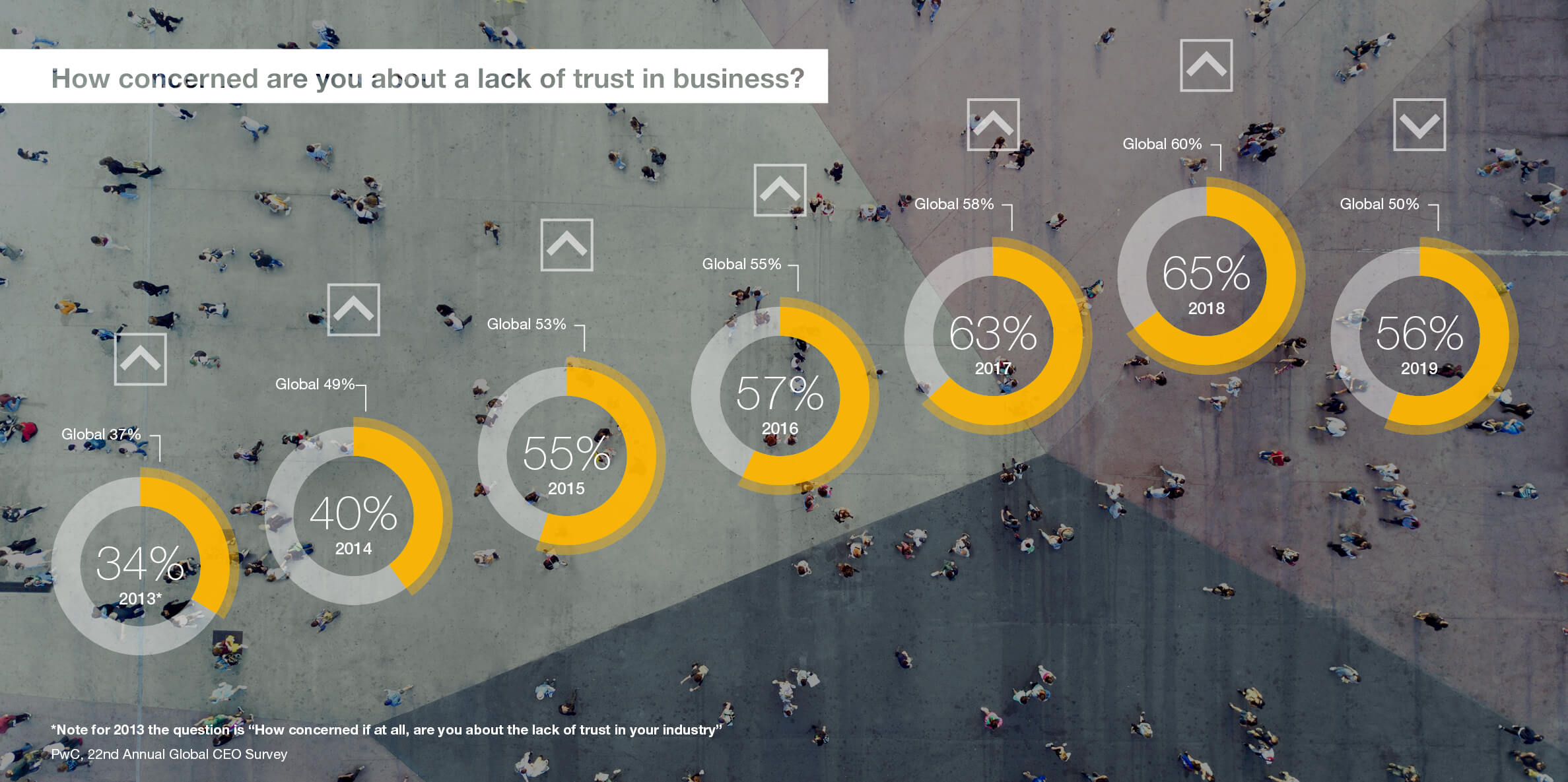
‘Trust’ has been a key topic for Australian CEOs over the past several years. Many have been identifying their own trust drivers and balancing the competing forces of delivering to shareholder expectations, as well as those of customers, employees and the general community.
After six consecutive years of rising CEO concern about a lack of trust in business, the concern falls from a high of 65% last year to 56% in 2019 as leaders understand and act on new expectations from their stakeholders.

Trust hasn’t disappeared. It has shifted towards the different business models that have removed intermediaries by using platforms, AI and new technologies to create or connect markets.
All CEOs should be thinking about how to build trust — with shareholders, customers, employees and the general community — and they should start by being more transparent.
How can businesses maintain or restore trust?
Creating a company culture of openness is a lot more complex than merely complying with laws and regulations that protect profits and self-interests. Genuine trust is a force for good. It requires constant focus on customers and community expectations and honesty with these and other stakeholders. CEOs can improve transparency by asking four key questions:
1. Are you consistently communicating what your company stands for?
Sending a clear, authentic message — internally and externally — about what the company really stands for will build trust. Qantas, for example, has spent years cultivating a culture of genuine concern for customer safety, and this theme of care for others has been repeated in other company messaging, including CEO Alan Joyce’s support for same-sex marriage rights in Australia last year.
2. Are you personally encouraging transparency in your organisation?
CEOs should ask themselves what they can do to promote openness. For instance, you can engage with employees by going on-site visits and walking the floors, and not only permit staff to speak out when they see something that doesn’t sit right, but encourage them to. Make sure that embedded incentive structures don’t inhibit honest, direct communication.

3. How effective is your governance structure?
Good governance is critical to building transparency and trust inside and outside an organisation. For example, in Australia, the recent Royal Commission into Misconduct in the Banking, Superannuation and Financial Services Industry received more than 10,000 submissions, and the findings have revealed widespread misconduct in the sector. Better oversight is clearly necessary and would go a long way in rebuilding consumer trust. But transparent reporting is a prerequisite for effective board engagement on this and other such issues. It’s also important for the board to engage in robust debate and, when appropriate, challenge the CEO and other leaders, the decisions they make, and outcomes. CEOs need to think about the imperative for better oversight as a positive development — good governance promotes a healthy organisation, and a healthy organisation is one that people have confidence in.
4. Are you leveraging technology to improve transparency?
New technology, such as artificial intelligence and machine learning, means that CEOs have access to more information about their organisation than ever before. With the ability to analyze billions of data points in milliseconds and see what humans might miss, the opportunities to uncover new insights are endless. For example, data applied to a payroll system could provide a detailed analysis of pay imbalances between genders. But if technology is to help drive transparency, companies must be willing to share these types of results — good or bad — with their stakeholders and explain how they’re acting on them.
These four questions aren’t a panacea for success but they are intended to prompt reflection. It can be difficult to build transparency into a culture that’s lacking it, but the public and employees will probably increasingly expect it in order to trust in the businesses that serve so many facets of life. Those CEOs who answer this call will be glad they did.









